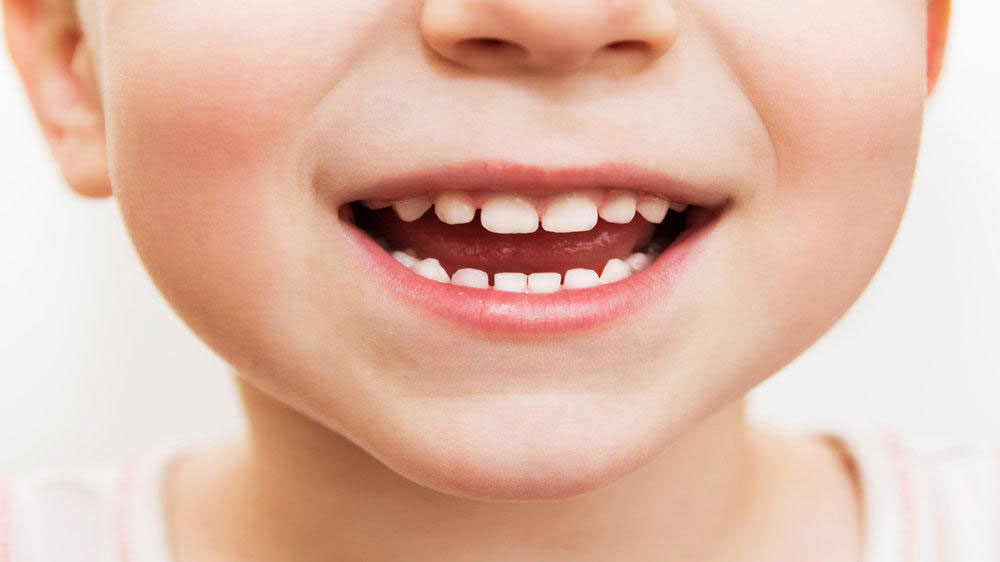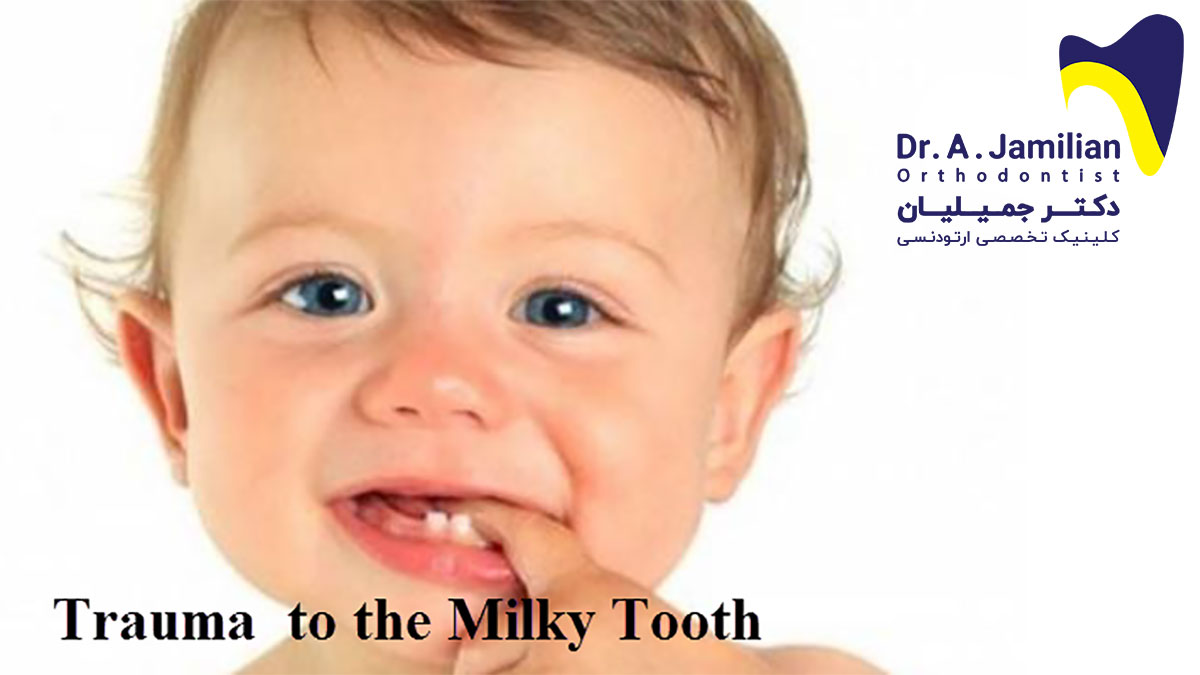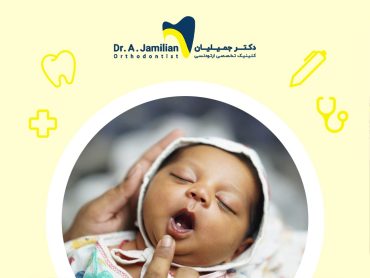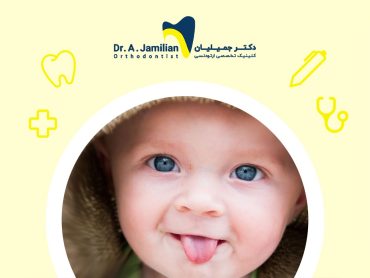Trauma to your child’s milk tooth can remain out of your notice. Therefore, make sure to be careful and check your child’s milk teeth if their jaw and face get damaged while playing or walking and be careful of any discoloration, movement, or loosening of your child’s tooth. This kind of trauma can sometimes be so strong that it can knock the tooth out. In times like this, make sure to put the tooth in a cup of milk and take your child to the dentist.
Keeping milk teeth healthy is as important as keeping the permanent ones, because there is a direct relationship between the on time growth and even the falling and replacement of these teeth with permanent teeth and it is necessary for having regular teeth in adulthood.

Lateral luxation or relocation in milk teeth
In this kind of relocation after trauma, the crown usually moves toward the palatal and the root does so toward the buccal. Therefore, the root of the relocated milk tooth does not move towards the permanent tooth bud, but this can rarely happen in the opposite direction especially if an external object like a pacifier is in child’s mouth. The best treatment is to reposition the teeth with finger pressure and splint them for 2-3 weeks. If getting a splint isn’t an option for you, you should pay attention to see whether there is an occlusal interference with the trauma or not.
If there is an occlusal interference and you can’t do repositioning (for example, because the trauma happened a long time ago and there are clots), you should extract the tooth. However, if there isn’t an occlusal interference (which is mostly seen in little children because of open bite or more overjet?), you can let the tooth be so that it can get repositioned by tongue pressure.
If you decide to keep milk teeth, you should learn the principles of mouth hygiene and have a soft food diet for 2 weeks. You should take into account the risk of losing the pulp and necrosis and inform parents about them.

You need to inform your children that milk or primary teeth fall and become replaced with permanent teeth. This process is painless and happens slowly. When a kid is still little, their teeth are also small and in harmony with their jaw. When they are infants, they have only few small milk teeth, since infants don’t need to chew. The milk teeth are completed by the age of 2-2.5 years-old and then are suitable for chewing soft food.
When children reach the age of 10, their jaws grow and these small milk teeth are of no more use and beauty. Therefore, bigger permanent teeth start growing and replacing the milk teeth. So the two important functions of milk teeth during childhood are for the purpose of beauty and also chewing soft food. In addition to the points mentioned, these teeth help with talking and the correct pronunciation of some words.
Treatment of damaged milk tooth
Trauma and breakage of the crown and root of milk teeth accompanied with involvement of the pulp, can influence the growth of permanent teeth. Treating a traumatized tooth is dependent on the signs and the different prognoses that can help the dentist choose the best treatment plan.
A study was done on a 4 years-old boy with a broken crown and damaged tooth pulp in the upper jaw. The chosen treatment for this child was extraction of the tooth because of the periapical lesion and disorder in the substitute permanent tooth follicle and the pulpotomy of the tooth. In the next visits, the child showed no clinical changes or any worrying signs. However, after 3 years, the patient did a follow up and it turned out that the position of the upper jaw incisors had changed. Also, the child’s permanent teeth had been hypocalcificated. Therefore, children who lose milk teeth sooner than the anticipated time, should be under the supervision of an orthodontist. In times like this, orthodontists do the necessary procedures to keep the permanent teeth healthy.
Trauma to the milky tooth FAQ
1-How long after trauma will my child’s tooth fall?
Usually after 2-3 weeks after severe trauma to milk tooth, the tooth will fall. First it becomes discolored and then falls. It is possible that the color of the tooth becomes grey or black and this is not related to the severity of the tooth trauma.
2-What should I do if the front tooth of my child is damaged?
Use a piece of cold damp gauze to apply pressure to the damaged area (if it is bleeding). Feed the child some ice or ice cream and put an ice pack wrapped in a clean piece of cloth on your child’s tooth. If your child is experiencing pain or is fidget, you can use children ibuprofen or acetaminophen to soothe the pain. You should also contact a dentist.
3-Does damaged milk tooth get repaired?
If the tooth decay is minor and the fall time of the tooth is close, there may be no need for repairing. The dentist will guide you about this matter after examination.
4-Does damaged milk tooth need dental veneers?
Keeping in mind that the trauma and the damage can be of different severities, the dentists don’t usually recommend dental veneers for milk teeth, because repairing milk teeth with veneers can influence the growth of permanent teeth and damage the bone under.
5-What happens if the nerve of the tooth gets damaged?
When the nerves in the tooth pulp (which is the inner layer of the tooth) become damaged (for example, because of trauma or decay), blood supply to the tooth stops. This can cause infection or death of nerve and tooth of the child.
6-What should I do if the milk tooth root remains in the gum?
As of this matter, your child needs to be under the supervision of a dentist. The fall of milk tooth in the anticipated time is important to prevent any disorders in the permanent teeth growth. In this situation, if the milk tooth root is preventing the on time growth of permanent teeth, the milk tooth needs to be extracted by a specialist.



